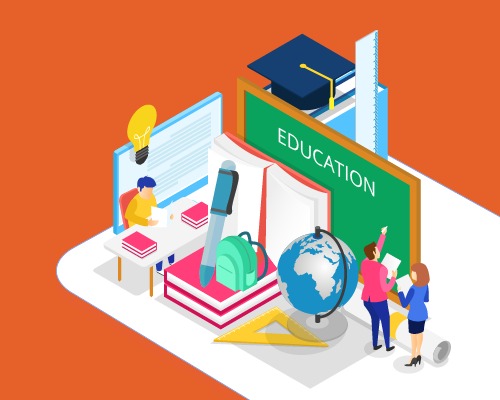How Project-Based Learning is Taking Education to New Heights

Are you tired of teaching the same old way, where students just memorise without really understanding how concepts apply to real life? Traditional methods like memorising facts and listening to lectures only sometimes help students think critically or solve problems in the real world. Standardised tests may show what students remember, but they don’t show if they can use that knowledge in everyday situations. This leaves students unprepared for the challenges they’ll face after school.
That’s where Project-Based Learning (PBL) comes in. It’s a way of teaching that changes everything. Instead of just memorising, students work together to solve real problems. PBL gets students excited, encourages creativity, and teaches them the skills they need to succeed in today’s world. It shows students how what they learn in class actually matters outside of school. With PBL, learning becomes an adventure that prepares students for life beyond the classroom. Sounds interesting? Let’s dive in to learn more about the same.
What is Project-Based Learning?
Project-Based Learning (PBL) is an innovative educational approach that places students at the centre of their learning experience. Unlike traditional classroom methods that rely heavily on lectures and textbooks, PBL shifts the focus towards hands-on, practical application of knowledge. In PBL, students are presented with a complex, real-world problem, challenge, or question that they must investigate, analyse, and ultimately solve. This process empowers students to actively engage in their learning journey, promoting a deeper understanding of the subject matter and fostering critical thinking skills.
PBL goes beyond just acquiring knowledge; it encourages students to collaborate, communicate, and think critically, which are essential skills for success in the modern world. By working on projects that are meaningful and relevant to their lives, students develop a sense of ownership and motivation, making learning more enjoyable and effective. Through PBL, educators aim to prepare students for the challenges they will face in their future careers, where problem-solving, creativity, and teamwork are highly valued.
Characteristics of Project-Based Learning
While definitions and rules about project-based learning (PBL) can differ among schools, it’s often linked with terms like “experiential learning” or “discovery learning.”
Basically, PBL has seven main characteristics:
- It starts with a major question, challenge, or problem for students to explore and solve.
- It connects to what students need to learn academically.
- It encourages students to ask questions and find answers.
- It helps students develop skills like critical thinking, communication, and teamwork.
- It lets students choose how they want to work on their projects.
- It gives students chances to get feedback and make improvements.
- It requires students to share their work and get feedback, like in real-life projects or scientific research.
Advantages of Project-Based Learning

Creative Thinking
When you tackle different tasks with varying levels of challenge, you become better at thinking critically. This skill is super important, especially for future jobs. If your studies don’t involve hands-on projects, you might struggle to apply what you’ve learned in real-life situations.
Deeper Understanding
It’s easy to forget stuff you read, right? But when you actually use what you know and dig deeper into a topic, it sticks better in your memory. Repeating tasks and really understanding them helps you remember more than just reading from a book.
Promotes Hands-on learning
Doing real projects lets you put what you’ve learned into practice. It’s not just about theory; you actually get to do stuff. Plus, it helps you get better at things like communication and teamwork.
Motivation and Engagement
In Project-Based Learning (PBL), students get to explore their interests, ask questions, and enjoy learning. They take charge of their projects, looking back on them and feeling proud of what they’ve achieved.
Real-world relevance
Project-Based Learning (PBL) is great because it connects what students learn in class with real life. PBL projects mimic real situations, so students can use what they know in everyday life or future jobs. By doing hands-on projects that feel like real challenges, students not only understand school stuff better but also learn how to solve problems, communicate, and work with others—a big deal for jobs today. PBL makes learning feel important and gives students a sense of how their education affects the world.
Team Management Skills
When you work on projects with others, you learn how to share your ideas, listen to teammates, and solve problems together. This helps you manage your time better and do more than one thing at once.
Differentiation
Everyone learns differently. Some people pick up things quickly, while others need more time. Sometimes, subjects can seem dull when taught the same old way. But with fun projects and interactive tools, learning becomes easier. This is what project-based learning is all about – it lets you learn in different ways so you can really understand a topic in your own style.
How to Implement Project Based Learning in the Classroom?
Step 1: Getting Ready for PBL
- Make Sure it Fits Your Lessons: Pick projects that fit well with what you’re already teaching in class. They should match your curriculum goals and help students understand real-life stuff.
- Choose Exciting Projects: Find projects that get your students excited and interested. Make sure they’re right for their age and what they like. When students are interested, they’ll be more into the project and learn more from it.
- Get Students on Board: Let your students help choose the project. Ask them what they’re into and what they think. When students feel like they have a say, they’ll be more into the project and work harder on it.
- Implement Flipped Classroom Techniques: Have students review instructional materials at home, allowing class time to be dedicated to collaborative work and deeper exploration of project-based tasks. Learn more on flipped classrooms here.
Step 2: Designing the Project Journey
- Creating the Big Question: Come up with a clear and interesting question that will be the main focus of the project. A good question makes students curious, encourages them to ask more questions, and guides them as they explore.
- Breaking it Into Steps: Divide the project into smaller parts, like research, planning, doing the project, and thinking about what was learned. Set up clear timelines, important points to reach, and moments to check progress. This helps students stay on course while still having room to explore and find things out.
- Supporting Success: Understand that students have different needs and abilities. Give them the right kind of help and support that matches how each of them learns. Create learning experiences that both challenge and empower students, letting them take charge of their learning journey.
Step 3: Making Learning Exciting
- Encourage Working Together: Create a classroom where everyone works as a team, talks openly, and appreciates different ideas. Let students give feedback to each other, think about what they’ve learned, and celebrate their successes.
- Explore Learning Through Questions: Support students’ curiosity by letting them ask questions, try things out, and discover on their own. Help them ask important questions, do their own research, and really think about the information to build their understanding.
- Integrate Technology: Discover how technology can make project-based learning (PBL) even better. With tools like Extramarks Smart School Solutions, such as Smart Class Plus, you can bring together digital resources and interactive lessons. Try out things like interactive whiteboards and online platforms to match different ways of learning, making lessons more interesting and helping students get comfortable with tech.
- Use Flipped Classroom Model: Use the flipped classroom model to make learning more dynamic. Have students engage with lecture materials at home and utilize class time for collaborative projects and hands-on activities, enhancing their engagement and understanding.
Step 4: Assessment and Reflection
- Making Clear Rubrics: Create straightforward and detailed rubrics that assess both what individuals and groups contribute. Clearly explain what success looks like, so students know what’s expected, and it helps in giving everyone a fair evaluation.
- Giving Feedback Regularly: Keep a consistent flow of feedback to guide students as they work on the project. When you provide helpful feedback, you’re helping them get better at what they’re doing and encouraging them to always improve.
- Celebrating What’s Learned: Recognize and cheer for successes and achievements in the project and what students have done. This can be done formally or just casually. Celebrating these moments helps show that the learning process is valuable and makes your students feel proud of what they’ve accomplished.
Ready to revolutionize your assessments?
Try Extramarks Assessment Centre for smart question suggestions, detailed student reports, and a range of features tailored to enhance your assessment journey.
Get started today!Closing Thoughts
Project-Based Learning offers a transformative approach to education, empowering students to become active participants in their learning journey. By embracing PBL, educators can unlock the full potential of their students, preparing them to thrive in an ever-changing world. So, why wait? Let’s embark on a journey of discovery and innovation with Project-Based Learning. Together, we can shape the future of education and empower the next generation of global citizens.
Last Updated on January 30, 2025
Reviewed by

Priya Kapoor | AVP - Academics
Priya Kapoor is an accomplished education professional with over 18 years of experience across diverse fields, including eLearning, digital and print publishing, instructional design, and content strategy. As the AVP – Academics at Extramarks, she leads academic teams in creating tailored educational solutions, ensuring alignment with varied curricula across national and international platforms...read more.










